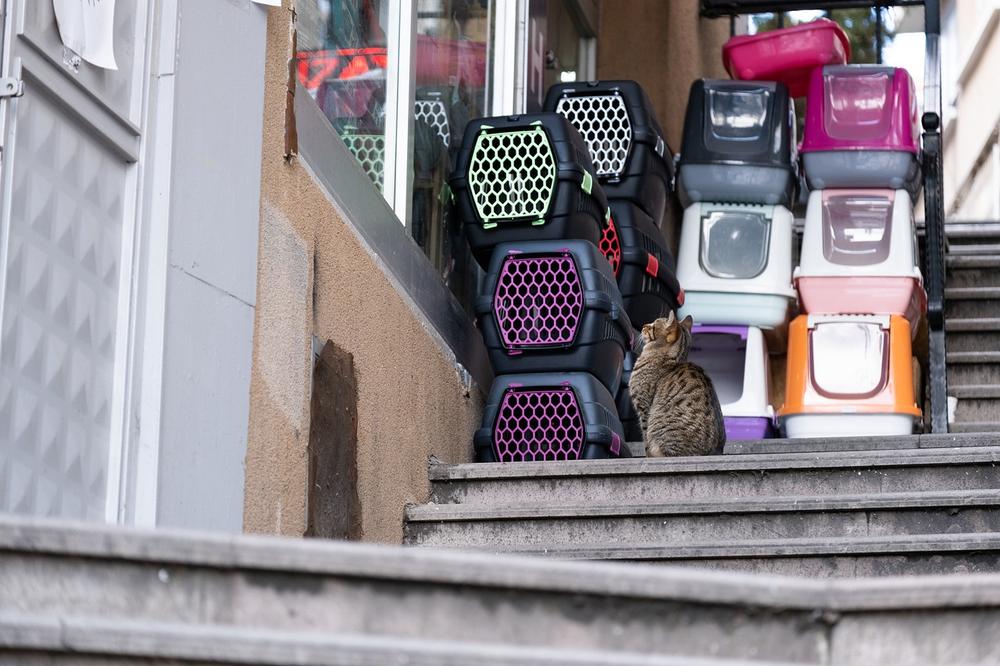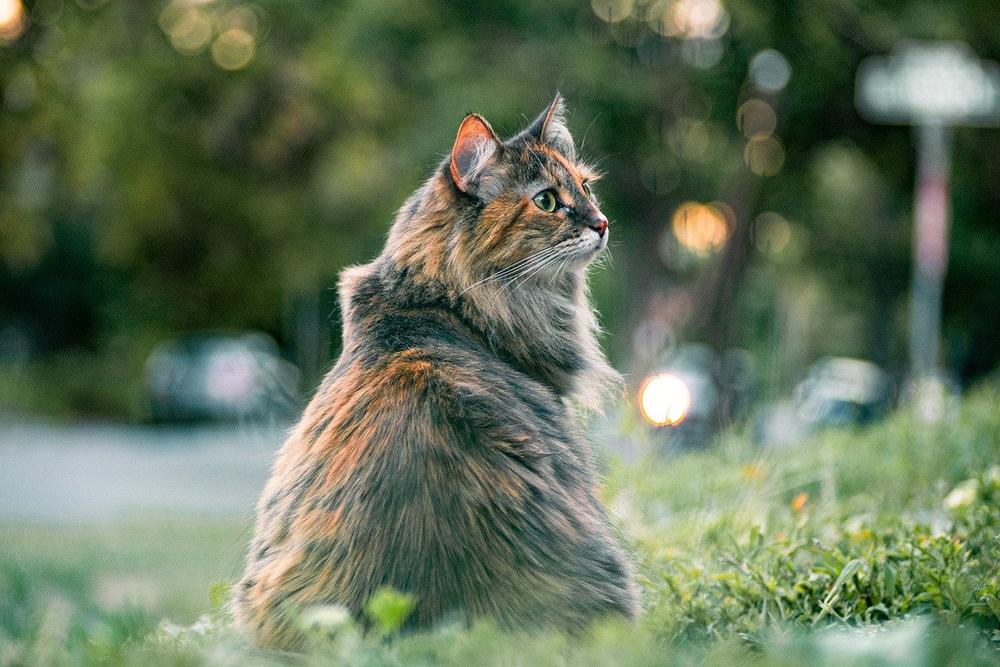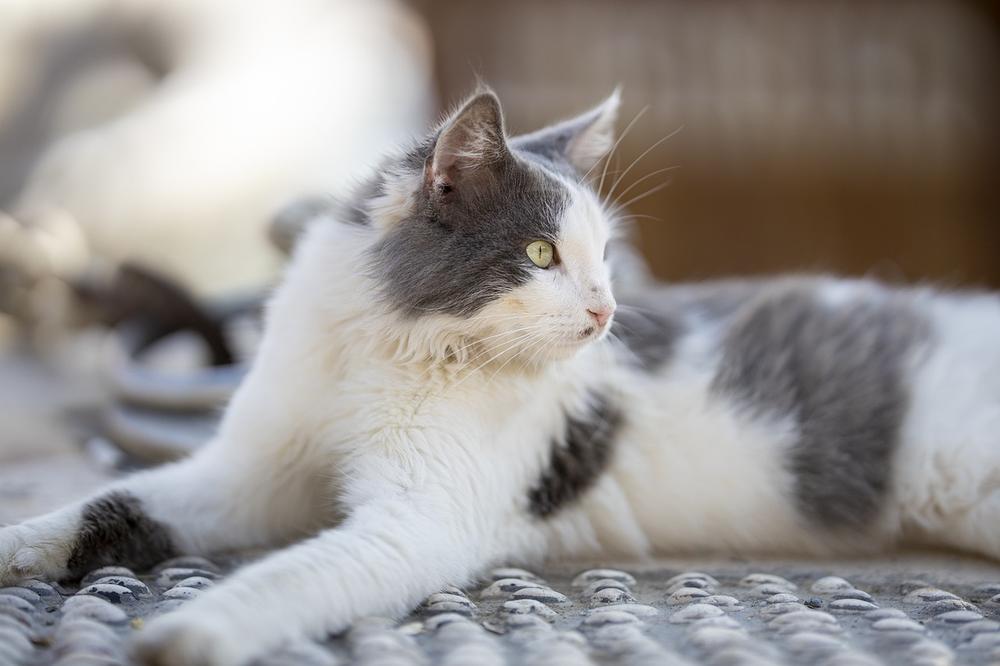Cat Not Using Litter Box After Giving Birth? Here's Why

You'll agree with me when I say:
Having a cat not use the litter box after giving birth can feel like a nightmare. 😱
You're worried sick about their health, imagining the worst scenarios.
But hey, don't panic just yet.
Let's delve into this together and find some answers.
My Cat Is Not Using the Litter Box After Giving Birth: What Could Be the Reason?
Common postpartum issues can cause litter box aversion
After your cat has kittens, she may experience discomfort or pain due to postpartum complications.
This can make her not want to use the litter box.
Veterinary attention is needed for conditions like uterine infections and mastitis.
Stress and anxiety may lead to litter box avoidance
Just like humans, cats can feel stressed and anxious after giving birth.
This might cause them to avoid using the litter box. To help your cat, create a calm and quiet space for her.
Put a litter box in a secluded area where she feels safe.

Using pheromone sprays or diffusers can also create a soothing environment for her.
Changes in litter box preferences and positioning
Sometimes, cats become sensitive to smells and textures during and after giving birth.
This can make them hesitant to use the litter box.
Try providing multiple litter boxes with different types of litter so your cat has options.
Also, experiment with different locations for the litter box to find one that she feels more comfortable using.
Every cat is unique, and the reasons why they might avoid the litter box can vary.
Pay close attention to your cat's behavior and consult with a veterinarian if the problem continues.
Main points I'll expand upon further down this article:
- Postpartum cats not using the litter box need a vet examination.
- Signs of potential issues include elimination outside the box and weight loss.
- Placenta consumption can cause unpleasant odors in the litter box.
- Monitor for signs of urinary tract infections, which can lead to aversion.
- Unneutered cats may have behavioral issues during pregnancy.
- Pain or discomfort from birthing can deter cats from using the litter box.
- Hormonal changes during pregnancy increase urination outside the box.
- Spaying prevents behavioral issues related to estrus cycles.
- Stress-related litter box avoidance requires considering litter type, box design, and cleanliness.
- Handling inappropriate elimination spots requires considering box preferences and proper placement.
But what if your cat's aversion to the litter box persists despite addressing common issues?
Let me share with you some other factors that might be influencing your postpartum cat's behavior...
Common Medical Causes for Litter Box Problems in Postpartum Cats
Postpartum cats can experience litter box problems for many reasons.
Here are several common medical causes to be aware of:
- Urinary tract infections (UTIs): These are frequent in postpartum cats and can cause pain while urinating. Provide separate litter boxes in different locations to offer relief.
- Behavioral abnormalities: When a postpartum cat shows abnormal behavior like not using the litter box, it's essential to take them to the vet for a full physical examination. This exam will help rule out any underlying medical conditions.
- Signs to monitor: Keep an eye out for signs like eliminating outside the box, urine spraying, spending excessive time in the box, vocalizing, lethargy, increased water intake, poor appetite, weight loss, poor coat, and frequent trips to the box.
- Placentas and odors: Cats consuming their placentas can result in unpleasant smells that may deter them from using the litter box.
- Unneutered cat behavioral issues: Unspayed cats may experience inappropriate urination during pregnancy due to behavioral issues.
- Discomfort after birth: Pain or discomfort during the birthing process can discourage postpartum cats from using the litter box.
- Hormonal changes: Hormonal shifts during pregnancy can lead to increased urination outside the litter box due to bladder space competition with growing kittens.
- Spaying benefits: Spaying can prevent future behavioral problems related to estrus cycles.
- Other influencing factors: Litter box behavior can also be influenced by hormonal shifts, physical discomfort, or stress after giving birth.
If you notice any concerning litter box behavior in your postpartum cat, consult your veterinarian for an accurate diagnosis and appropriate treatment. 🐱

And if you're wondering why your postpartum cat is meowing and purring after giving birth, I have the answer for you.
In my article, I explore the reasons behind this behavior and whether it's normal.
Trust me, you'll find all the information you need in my blog post Cat Meowing Purring After Giving Birth.
Resolving Stress-Related Litter Box Avoidance in Postpartum Cats
When it comes to resolving stress-related litter box avoidance in postpartum cats, there are several helpful strategies you can implement:
- Provide vertical spaces like cat trees or shelves to give the cat a sense of security and control. This can reduce stress levels and encourage litter box usage.
- Choose the right type of litter and gradually transition if necessary. Some cats may have preferences for certain textures or scents.
- Regularly clean the litter boxes using mild soap. Cats are more likely to use a clean litter box, so keeping it tidy is important.
- Consider the design of the litter box. Opting for a larger plastic storage box or avoiding covered litter boxes can provide more comfort, especially for shy cats.
- Manage stress and transitions by gradually relocating the litter box and minimizing potential stressors like loud noises, other animals, and excessive handling.
- Create a suitable birthing environment for the cat. Providing a separate, cozy space for giving birth and nurturing kittens is vital since cats instinctively protect their nest by excreting in secluded areas.
These guidelines can assist in reducing stress and encouraging the use of litter boxes in cats after giving birth. 😺

But what if the stress-related litter box avoidance persists?
Don't worry, I've got more strategies for you to consider. In the next section, we'll explore how feline pheromone diffusers and making adjustments to litter box preferences can make a world of difference in helping your postpartum cat find relief.
You won't want to miss this!
Tips for Handling Cats That Prefer Inappropriate Elimination Spots
If your cats keep peeing in all the wrong places, here are 10 handy tips for you:
- Get yourself some feline pheromone diffusers or sprays.
- Think about what kind of litter box your cat prefers.
- Make sure each cat has its very own litter box.
- Have an extra litter box on standby, just in case.
- Give your cats a choice by offering different types of litter.
- Consider things like covered or uncovered boxes, height, and the material on the floor.
- When you have a mommy cat expecting babies, add more litter boxes.
- Put cozy bedding in the area around the litter box.
- Play around with various litter and box designs, see what works best.
- Find a nice calm spot away from their food and water to place the litter boxes.
And don't forget...
Keep that litter box clean, scoop it regularly, and if needed, use a mix of vinegar and water to clean it up.
When your furballs use the litter box like champs, ensure to reward them with treats and praises.
Why Declawed Cats May Have Issues With Litter
To help your declawed cat with litter box issues, consider these 10 helpful tips:
- Understand the potential sensitivity of a declawed cat.
- Notice any signs of discomfort during litter box use.
- Try different litter textures to find one that suits them.
- Test softer non-clumping litters.
- Explore paper-based litter options like shredded paper or pellets.
- Ensure the litter is not causing pain or discomfort.
- Provide a comfortable litter box with low sides.
- Use unscented litter to avoid irritating their sensitive paws.
- Clean the litter box regularly to maintain hygiene.
- Consult a veterinarian for further guidance and advice.
Keep in mind the unique needs of your declawed cat when selecting a litter option, aiming for maximum comfort and minimal stress for successful litter box usage.
And finally, if you're still wondering about your declawed cat's litter box behavior, I've got you covered.

In my article, Cat Sleeping Next to a Litter Box, I delve deeper into the reasons behind this peculiar habit.
Offering valuable insights and solutions, this guide will help unravel the mystery and provide the answers you seek.
Don't miss out on this essential resource that can ease your concerns and address your cat's unique needs.
And that wraps up today's article.
If you wish to read more of my useful articles, I recommend you check out some of these: Why Does My Cat Play in the Litter Box, Cat Runs Out of the Litter Box While Pooping, Why Do Cats Knock Over Their Food Bowls, and Is Purring Involuntary in Cats
Talk soon,
-Sarah Davis